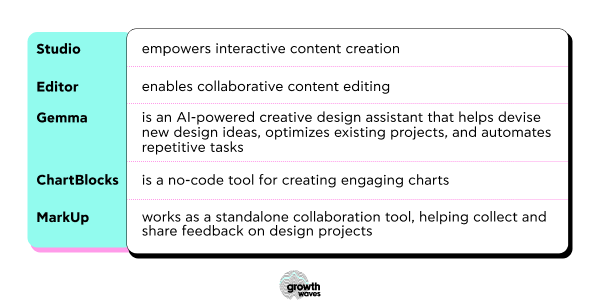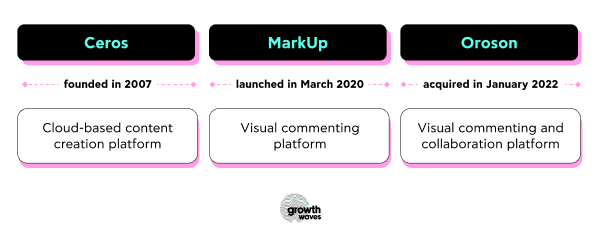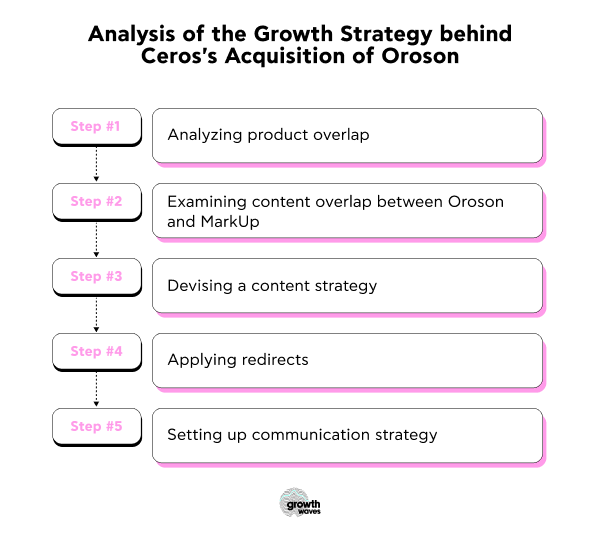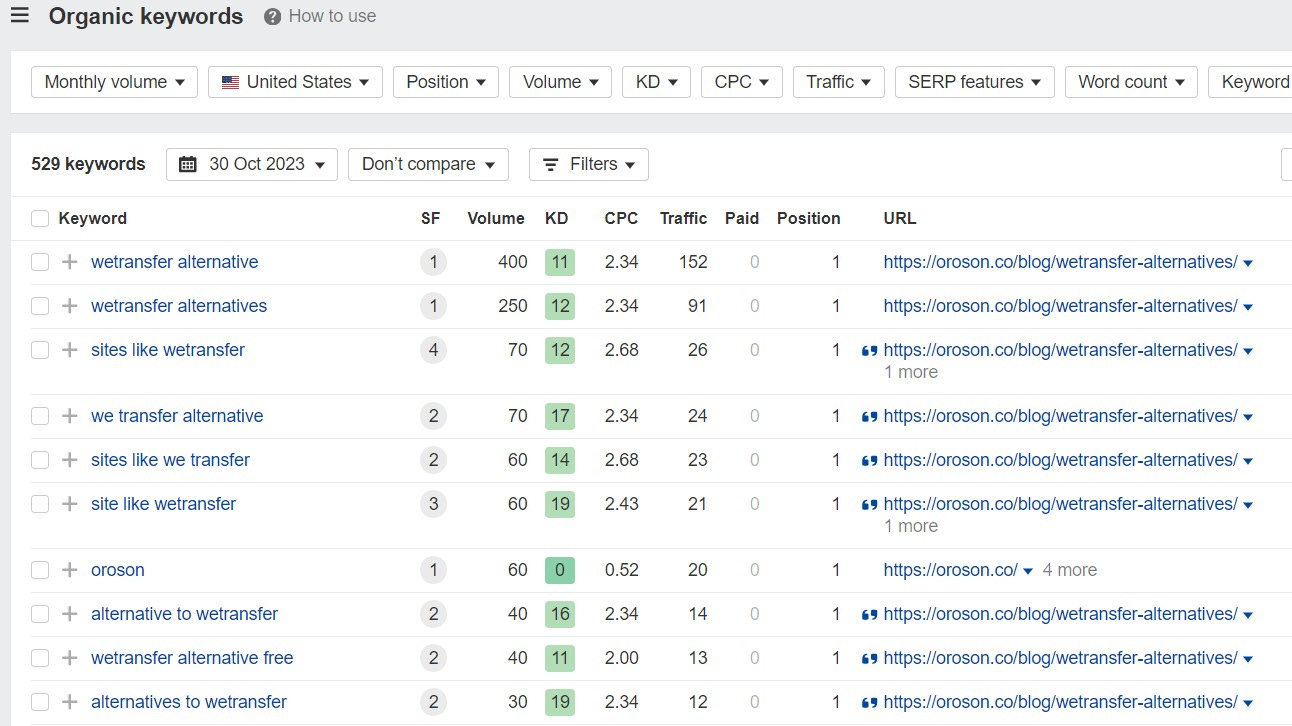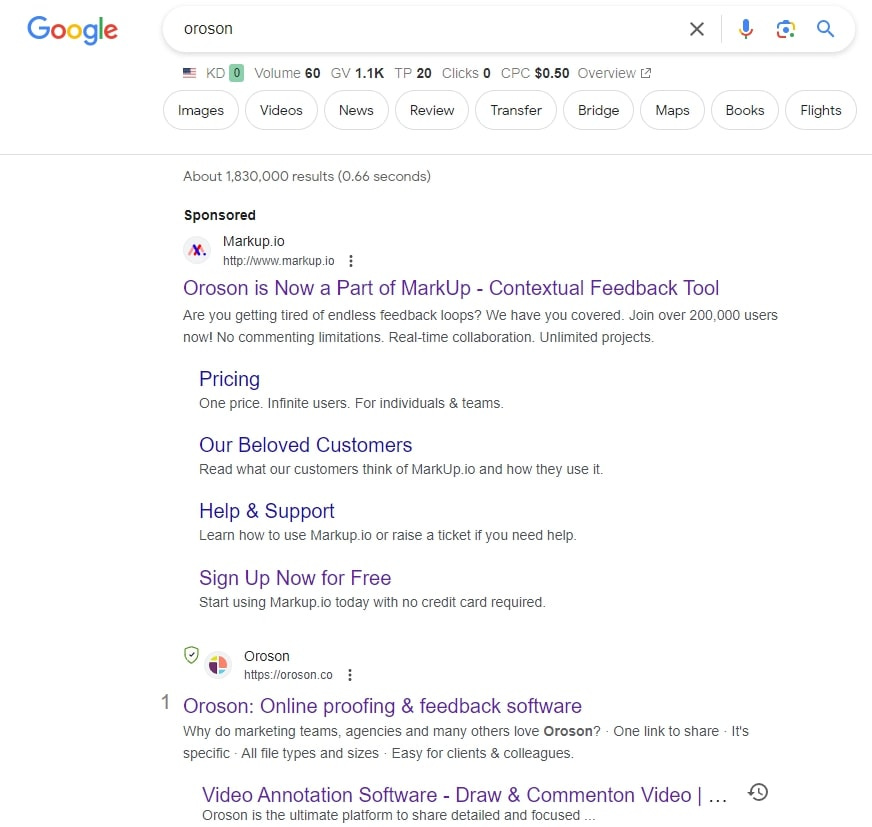SaaS launching a SaaS buying another SaaS
How Ceros turned MarkUp into a growth engine—then made a key acquisition
👋 Hey, I’m George Chasiotis. Welcome to GrowthWaves, your weekly dose of B2B growth insights—featuring powerful case studies, emerging trends, and unconventional strategies you won’t find anywhere else.
Very often, I hear that introducing an outsider’s perspective is much needed in SaaS.
Why?
SaaS has become commoditized, and most categories have reached a high level of maturity.
Competition is intense, and the playbook of the past (whatever that may be for each company) doesn’t work any longer.
Due to the nature of my work, I’m exposed to different growth strategies; some are successful, some are not.
For the most part, even if these strategies appear innovative, they still have elements of and are based on the old growth playbook.
Not this one, though.
These folks are onto something.
Here’s what.
A little backstory
Ceros is a cloud-based platform that offers various content-creation solutions.
To be precise, you can find five tools and services under the hood of Ceros’s website:
Today, my point of interest is MarkUp.
Ceros launched this product in March 2020, making it part of its suite to help users collaborate and share feedback on visual content in real time.
The idea for this product originated after discovering a “pretty interesting gap in the market,” as Ceros’s creative director Jack Dixon, mentioned in an interview with TechCrunch.
Here’s the example he gave.
After designers finish working on prototypes and start collaborating on the website, which is either in a live or a staging phase, further editing requests mostly go through email, phone, or Google Docs.
As a result, the process becomes fragmented and inefficient.
Thus, MarkUp was created to answer this pain point.
However, there was a much larger goal behind MarkUp’s launch.
Take a look at the diagram below.
Let’s break it down.
As you now know, the idea behind MarkUp was to help designers and other people involved in a design project share feedback on the go.
A very specific intent, right?
Also, it’s a concrete “job to be done,” as Tamara Ceman, Director of Marketing at Markup.io, put it in a collaborative post on Growth Unhinged.
What did she mean by it?
The growth team at MarkUp chose to focus on an audience segment with a specific pain point rather than on a persona with general demographics and psychographics.
Thus, the entire marketing strategy depended on this idea.
Instead of traditional keyword research, for example, Tamara and her team had to focus on “high intent–signaling long-tail keywords,” which often had no search volume.
The idea came to them from customer interviews, which revealed that users searched for those keywords.
Now, MarkUp ranks at the top of Google searches for them.
You may say, “This sounds like a case for product-led growth,” and you will be 100 percent right.
Close observation and Tamara’s story in the guest post help us intuit the following.
Ceros, a sales-led SaaS, launched MarkUp as an experiment to see if:
Product-led growth worked for one of Ceros’s products.
It would extend Ceros’s suite by targeting an audience segment with a specific need.
And it worked.
Testing product-led growth for MarkUp helped it reach 400,000 users and opened the door for more growth opportunities.
But not your “traditional” B2B growth opportunities.
Enter Ceros’s acquisition of Oroson.
Ceros acquires Oroson
Oroson was a collaboration tool that allowed users to create a dashboard for a visual content project and share feedback.
That sounds a bit like MarkUp, right?
Indeed, Oroson was a competing online visual commenting tool, but with certain features that MarkUp lacked—uploading video and audio files and sharing feedback in them.
The goal of this acquisition was to add these features to MarkUp’s toolkit, thus expanding its functionality.
So here you have it—a SaaS (Ceros) launched a SaaS (MarkUp) and purchased another SaaS (Oroson).
But how is it connected to MarkUp and the whole product-led growth strategy mentioned above?
As part of the acquisition, Ceros and MarkUp got hold of Oroson’s website and assets, and therefore its traffic.
A potential win for MarkUp’s SEO strategy, right?
Well, let’s see how it played out.
Oroson’s role in MarkUp’s growth strategy
Ceros wasn’t holding back when it came to the website assets it got from Oroson’s website.
In fact, a rather ingenious growth strategy was born from this acquisition.
After an elaborate analysis and data deep-dive, I’ve traced the following steps Ceros and MarkUp took to benefit from Oroson’s online presence.
Here’s a detailed look at my findings.
Step #1: Product overlap
Where do MarkUp and Oroson overlap in terms of product?
Let’s take a look.
As you can see, MarkUp and Oroson share twelve features.
One could say both products are, in fact, the same.
However, comparing and contrasting them and pinpointing the differences, no matter how small, is crucial for the next step—content overlap.
In other words, Ceros used product overlap to see which of Oroson’s website assets it could take advantage of for MarkUp’s sake.
An example?
Even after its acquisition by Ceros, Oroson still (as of October 2023) ranks top on Google search for the search term WeTransfer alternative and other relevant terms.
This happened because Oroson had a file-sharing feature similar to WeTransfer.
You can find some content pieces on Oroson’s blog covering WeTransfer alternatives.
Yet, MarkUp doesn’t share this feature.
Thus, since there is no product overlap between Oroson and MarkUp in this particular instance, MarkUp does not need content assets related to it.
Now, let’s take a closer look at the content overlap between the two.
Step #2: Content overlap
Before the acquisition, Oroson ranked for many keywords, some of which didn’t matter to MarkUp since there was no product overlap.
I’ve shown you an example in the previous section.
However, since the product overlap was significant, there should be some search terms in Oroson’s possession that MarkUp could benefit from.
And there were.
For instance, Oroson used to rank for the search term artwork approval software.
Now, if you look back at the list of features in the section above, you’ll see that this keyword is relevant to both MarkUp and Oroson.
They both have features for collaboration and feedback sharing on different design projects.
Here are a few more examples where MarkUp and Oroson would overlap in terms of content.
As you can see, MarkUp got its hands on a rather impressive content asset after acquiring Oroson.
So, how did they make use of it?
And what did they do with the pages that were irrelevant to MarkUp?
Read on, it gets even more interesting.
Step #3: Content strategy
Let’s take a closer look at Oroson’s website to understand what content strategy MarkUp followed to make use of Oroson’s assets.
I reviewed all the pages on Oroson’s website, and here’s what I found out.
So, from this analysis, one can assume that Ceros and MarkUp took a two-fold approach to Oroson’s website content.
Leave some pages as they were.
Redirect specific pages to newly created ones on MarkUp’s website.
Everything is clear with some pages on Oroson’s website that were not yet changed—they were most likely not of much value to MarkUp since there was no product or content overlap.
But things are much more interesting with redirected pages.
Let’s talk more about them.
Step #4: Redirects
The table in the previous section tells us that, so far, MarkUp redirected nine pages from Oroson’s website to the newly created pages on its own website.
Why these nine specifically?
There is a chance that, at the time of acquisition, these pages were the most relevant to MarkUp, so the marketing team decided to take advantage of them right away.
Indeed, you can notice content overlap if you inspect these nine redirected URLs.
With this approach, MarkUp pursued three goals:
You can see positive outcomes already.
For instance, by redirecting several articles to newly created blog posts, MarkUp picked up a few new keywords it didn’t rank for before the acquisition:
creative workflow
video production workflow
document review and approval process
how to annotate a video
artwork approval software
annotation tools
However, note that such a strategy is usually not a one-time thing. It means that MarkUp will move forward with more redirects from Oroson’s website when the time comes.
There’s one more point for discussion.
Step #5: Communication strategy
As you know, some pages from Oroson’s website weren’t redirected to MarkUp (such as the homepage).
Thus, they needed a way to inform Oroson users that this product is now part of MarkUp.
In other words, there had to be clear communication of the acquisition.
What you can see now is that MarkUp added a banner at the top of Oroson’s website to announce the news:
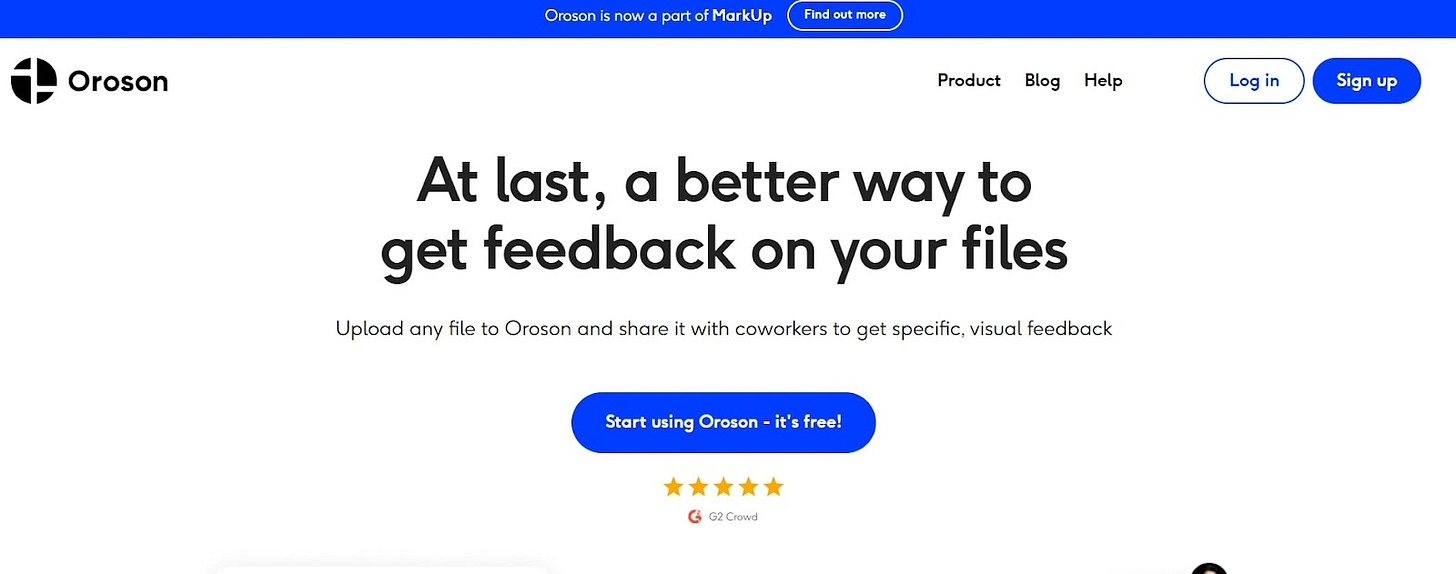
Apart from that, if you type oroson in Google search, you will see an ad informing searchers of the acquisition:
Lastly, every new user who has come across Oroson and wants to sign up for it will see a page with a message that it is now part of MarkUp.
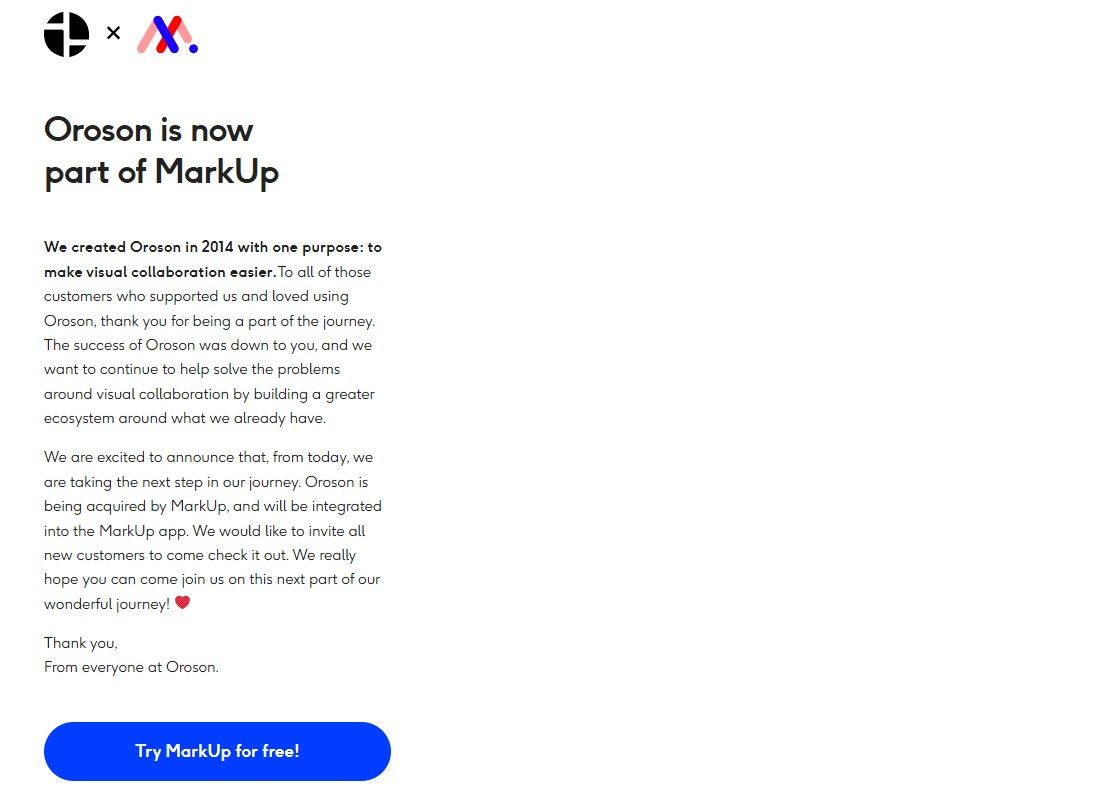
This important communication strategy is necessary to transfer potential Oroson users to MarkUp and explain the redirects.
Key takeaways
Let’s sum up this case of SaaS launching a SaaS buying another SaaS:
A SaaS with a sales-led motion may benefit from experimenting with product-led growth for one of its products.
In Ceros’s case, it helped them reach an audience segment with specific intent—there was a need for a tool that allowed real-time commenting and feedback on a visual project. Thus, MarkUp appeared.
Product-led motion opens doors for more growth opportunities. In our case, it was the acquisition of Oroson.
Acquiring another SaaS may present a significant product overlap, such as the one between MarkUp and Oroson, which can benefit from further organic growth.
Following product and content overlap can help devise a strategy (such as redirects after creating new pages) to improve the website’s authority and online visibility.
And the final takeaway.
Bold moves like the one Ceros made surely bring a breath of fresh air to the highly commoditized world of SaaS.
Final thoughts
What Ceros does at the intersection of product and growth is truly remarkable.
It’s the kind of strategy that inspires you to do something different.
Which, as explained in the intro, is much needed in today’s environment.
Before you go, I have a favor to ask:
We put a lot of work into creating these notes for you.
And, quite frankly, I want more people to have access to them.
If you feel that someone you know would benefit from this note, please forward it to them and ask them to sign up for GrowthWaves.
The more people we get onboard, the better content we’ll be able to create and the more value we’ll be able to add.
See you next week!


